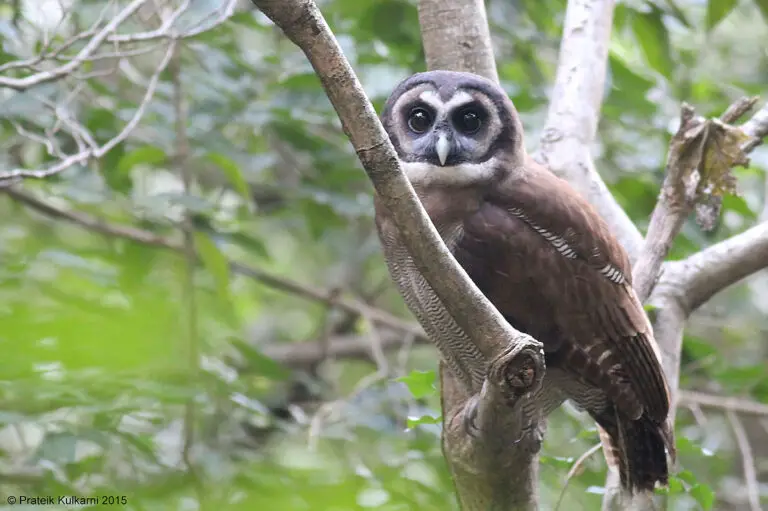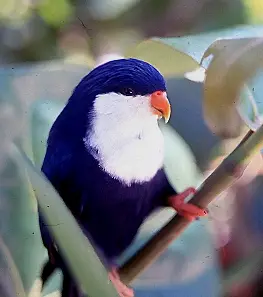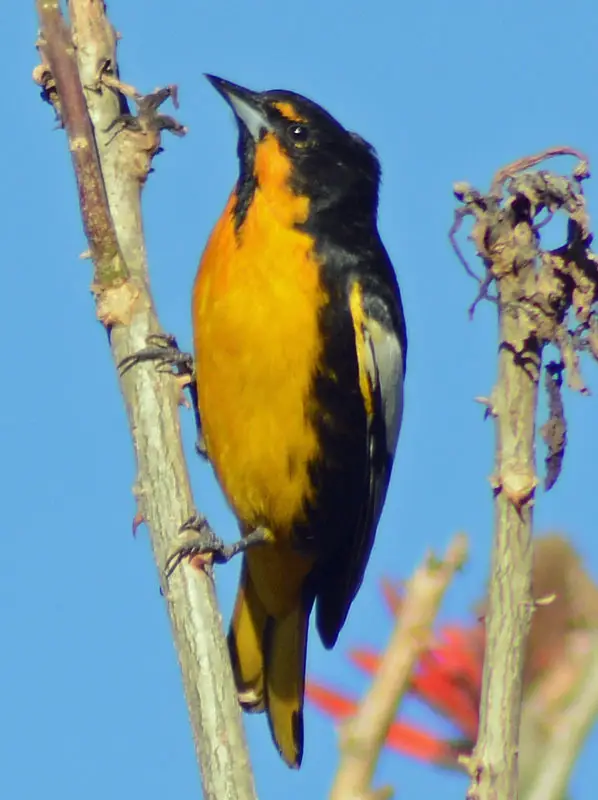Eastern Whipbird Birds
Scientific Classification
Domain: Eukaryota
Kingdom: Animalia
Phylum: Chordata
Class: Aves
Order: Passeriformes
Family: Psophodidae
Genus: Psophodes
Species: P. olivaceus
Eastern whipbird Overview
The Eastern whipbird is a distinctive bird found in the forests and woodlands of eastern Australia. Known for its loud and distinctive “whip-crack” call, the Eastern whipbird is a secretive bird that is often heard but not easily seen. It has a dark green and black plumage with a white patch on its throat and a long, curved bill. The Eastern whipbird feeds on insects, spiders, and small vertebrates, foraging on the forest floor and in the undergrowth. It is known to live in pairs or family groups and is monogamous, with both parents sharing the responsibility of caring for their young. Despite its secretive nature, the Eastern whipbird is an important part of the ecosystem, contributing to the biodiversity of Australia’s forests.
Eastern whipbird Characteristics
The Eastern whipbird is a medium-sized bird with a distinctive call that sounds like a whip cracking. They have dark green and black feathers with a white patch on their cheek. They are found in the forests and woodlands of eastern Australia. They are known for their shy and elusive nature, often staying hidden in dense vegetation. They feed on insects, spiders, and small invertebrates. The Eastern whipbird is known for its loud and unique call, which is often heard in the early morning and late afternoon.
Eastern whipbird Habitat
The Eastern whipbird is a unique bird found in the forests and woodlands of eastern Australia. They are known for their distinctive and loud “whip-crack” call that echoes through the trees. These birds have a specific habitat preference, preferring dense undergrowth and thick vegetation for foraging and nesting. They are secretive birds, often heard but not seen due to their shy nature. Conservation efforts are important to protect their habitats from deforestation and urbanization. By preserving their habitats, we can ensure the survival of these fascinating birds for future generations to enjoy.
Eastern whipbird Sounds
The Eastern whipbird is known for its distinctive call, which sounds like a loud “whip-crack” followed by a lower “choo-choo” noise. This unique call is made by both the male and female birds, often in duet. The Eastern whipbird’s call can be heard echoing through the forests and woodlands of eastern Australia, where they are commonly found. Their calls are used to communicate with each other, mark their territory, and attract mates. These sounds are a beautiful and iconic part of the Australian bushland, and hearing them in person is a truly special experience.
Eastern whipbird Diet
The Eastern whipbird is a bird species found in eastern Australia. Their diet primarily consists of insects, spiders, small lizards, and fruits. They forage for food on the ground or in the low vegetation of forests and woodlands. The Eastern whipbird has a varied diet that helps them meet their nutritional needs and maintain their energy levels. They have a unique feeding behavior where they use their long, curved bill to probe for food in crevices and under bark. This specialized feeding technique allows them to access hard-to-reach prey items. Overall, the Eastern whipbird’s diet is well-suited to their natural habitat and lifestyle as a forest-dwelling bird.
Eastern whipbird Predators
The Eastern whipbird is a small, elusive bird found in the forests of eastern Australia. It is primarily a ground-dwelling bird, foraging for insects and small invertebrates among the leaf litter. Despite its small size, the Eastern whipbird has a strong, sharp beak that it uses to catch and consume its prey.
Predators of the Eastern whipbird include larger birds of prey such as owls, hawks, and eagles, which may hunt them from above. Snakes and mammals such as foxes and cats are also known to prey on Eastern whipbirds, especially when they are nesting on the ground. Due to their cryptic coloration and secretive nature, Eastern whipbirds rely on their sharp calls and alarm signals to warn each other of potential threats from predators.
Eastern whipbird Life span
The Eastern whipbird, a unique bird found in eastern Australia, has a lifespan of around 8 to 12 years. These shy and elusive birds are known for their distinctive call, which sounds like a whip cracking through the air. They are often found in dense forests and thick undergrowth, where they feed on insects, spiders, and small reptiles. Despite their secretive nature, Eastern whipbirds play an important role in the ecosystem as seed dispersers and insect controllers.
Eastern whipbird Conservation Status
The Eastern whipbird is classified as “Least Concern” on the IUCN Red List, indicating that it is not currently facing any major threats to its population. However, habitat loss due to deforestation and urban development is a potential threat to this species. Conservation efforts are being made to protect and preserve their natural habitats, including the establishment of protected areas and restoration projects. Continued monitoring and research are essential to ensure the long-term survival of the Eastern whipbird and other threatened species.
Eastern whipbird Population
The Eastern whipbird is a unique bird found in the forests of eastern Australia. Known for its distinctive whip-crack call, this bird is often heard before it is seen. With its green and black plumage, the Eastern whipbird is well-camouflaged among the dense vegetation where it forages for insects and small invertebrates. Despite its elusive nature, conservation efforts are important to protect the habitat of the Eastern whipbird and ensure its continued presence in the wild. Let’s work together to preserve this fascinating species for future generations to enjoy.
Eastern whipbird Interesting Facts
The Eastern whipbird is a unique bird found in eastern Australia. It gets its name from its distinctive call, which sounds like a whip cracking followed by a loud “chew” noise. This call is usually made by a male and female in duet. The Eastern whipbird is quite shy and elusive, making it difficult to spot in the wild. They are known to have a close relationship with the Superb Lyrebird, often following them to feed on insects disturbed by their scratching. This bird is known for its beautiful plumage, with a striking black and white pattern.
Conclusion
In conclusion, the Eastern whipbird is a unique and fascinating bird known for its distinctive call and secretive nature, making it a special sight to see in the wild.


